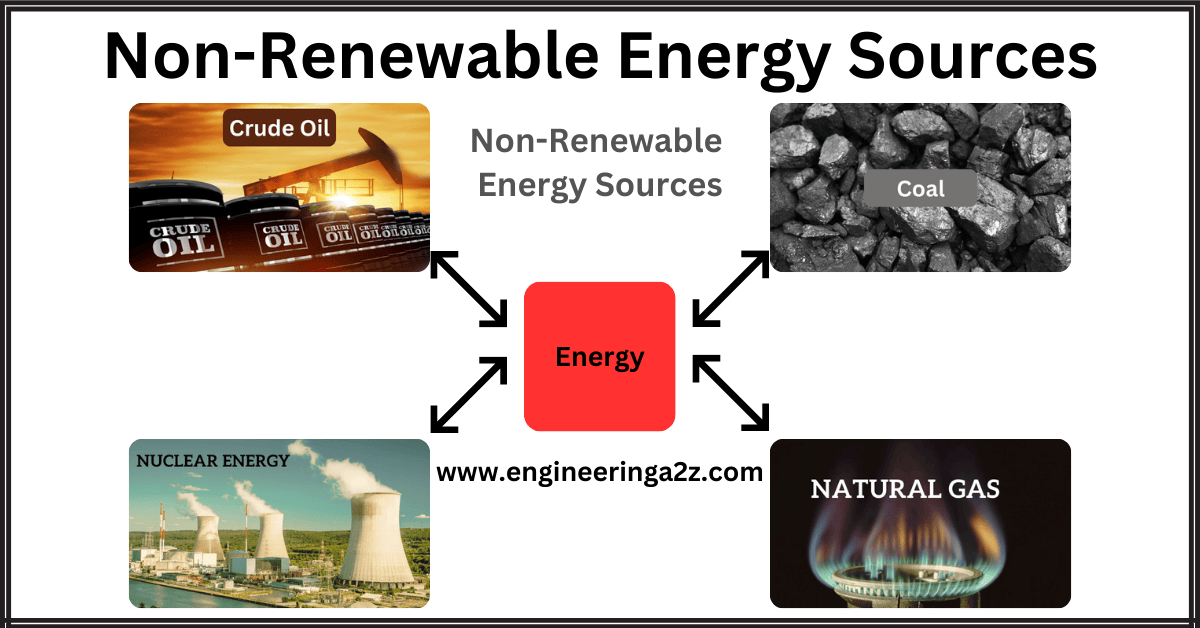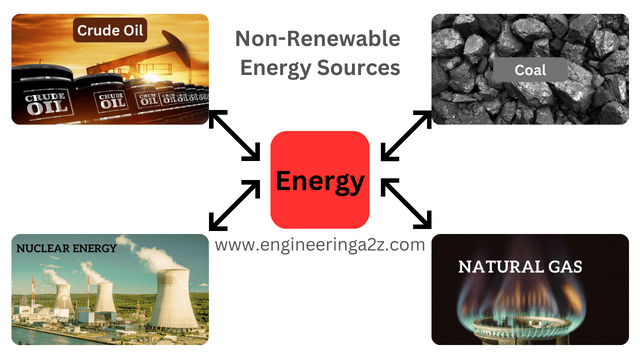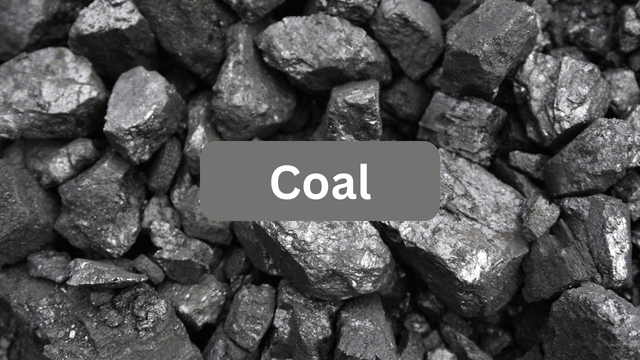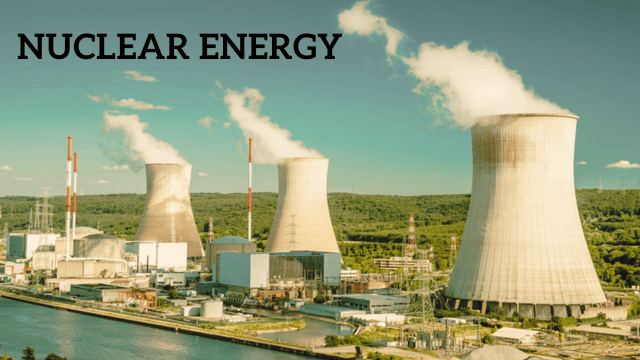
Table of Contents
Non-Renewable Energy Sources
The sources of energy that can get exhausted and can never be reproduced again in the near future are called non-renewable energy sources – For Example, fossil fuels, minerals, etc.
Non-renewable sources of energy have continued to produce constant energy throughout the world. This is because of their high availability. Non-renewable energy sources can be attributed to natural sources that are not regenerated once the head is depleted. Sources include fossil fuels such as coal and petroleum products e.g., natural gas and diesel.
The non-renewable energy sources are explained as the following:

1. Coal
Coal is a type of fuel that comes from ancient plants and is burned to make electricity. When coal is burned, it releases gases that harm the environment and our atmosphere. The main gas it emits is carbon dioxide (CO2), contributing to global warming. It also releases other gases like sulfur, nitrogen oxide (NO), and mercury, which can pollute the air and water. Sulfur combines with oxygen to form sulfur dioxide (SO2), a chemical that can harm trees and water when it mixes with moisture and creates acid rain. Nitrogen oxide contributes to smog and acid rain as well. Mercury released from burning coal settles in water and can accumulate in fish and shellfish, posing a risk to animals and people who eat them.

2. Crude Oil
Oil is extracted through large drilling platforms from oil reserves, where the remains of marine micro-organisms accumulate over millions of years and gradually infiltrate the sea floor sediment and rock as they decay.

3. Natural Gas
Natural gas consists primarily of methane and is essentially the remains of the decomposition of plants, animals, and microorganisms that existed millions of years ago. It is organic matter transformed into fossil fuels as a result of compression under the earth’s surface.

4. Nuclear Energy
Nuclear power is generated using uranium or plutonium. Uranium is a highly radioactive material that needs to be dug up and processed generating a huge amount of waste in the process. Before uranium can be used in nuclear reactors it needs to be enriched. Nuclear reactors generate heat through a process of nuclear fission. The steam generated from this heat drives turbines and generators.

Most nuclear power plants are situated along the coast so that the sea can be used as a cooling mechanism instead of cooling towers.
Advantages of Non-Renewable Sources of Energy
The advantages of non-renewable sources of energy are as follows:
- Some non-renewable sources of energy such as natural gas burn without any soot hence less environmental pollution.
- Most non-renewable sources of energy are easy to transport from one area to another. For example, petroleum oils can be transported via pipes.
- Cost of producing non-renewable energy is low since they are naturally available. Furthermore, they are cheap to transform from one form of energy to another.
- Most of these energy sources are abundantly available in different areas. Their availability is not affected by climatic conditions.
Disadvantages of Non-Renewable Sources of Energy
The disadvantages of non-renewable sources of energy are as follows:
- Produce harmful greenhouse gases which contribute to global warming. Coal once burnt produces carbon dioxide harmful to the environment.
- Once they are depleted they cannot be replaced making them expensive to obtain.
Frequently Asked Questions (FAQs)
Define Non-Renewable Energy Sources with an example.
The sources of energy that can get exhausted and can never be reproduced again in the near future are called non-renewable energy sources—for Example, fossil fuels, minerals, etc.
What are the advantages of Crude oil?
(i) It is considered easy to handle, store, and transport.
(ii) It is easier to extract from the ground than coal and more cost-effective to transport.What are the disadvantages of Natural gas?
(i) Numerous environmental impacts arise from gas exploration.
(ii) Dangers include explosions and oil spills.List the examples of Renewable energy sources.
Air and water.
Solar energy etc.
Read Also:
- DIAC | Construction | Working and V-I Characteristics
- Difference Between A.C. and D.C.
- Advantages | Disadvantages and Applications of Electric Power
- Output Equation of Transformer
- Power Factor Improvement Methods





Leave a Reply